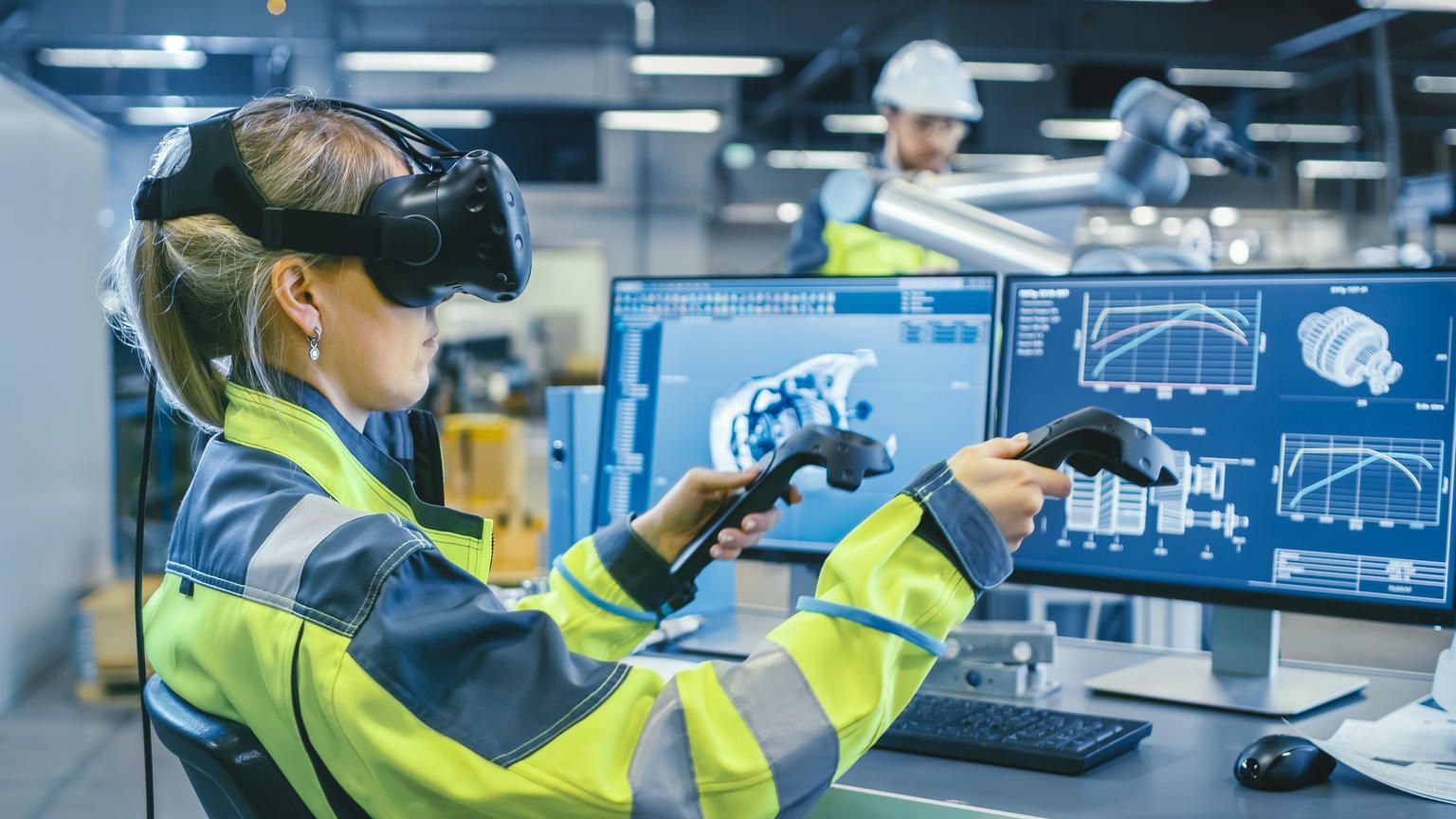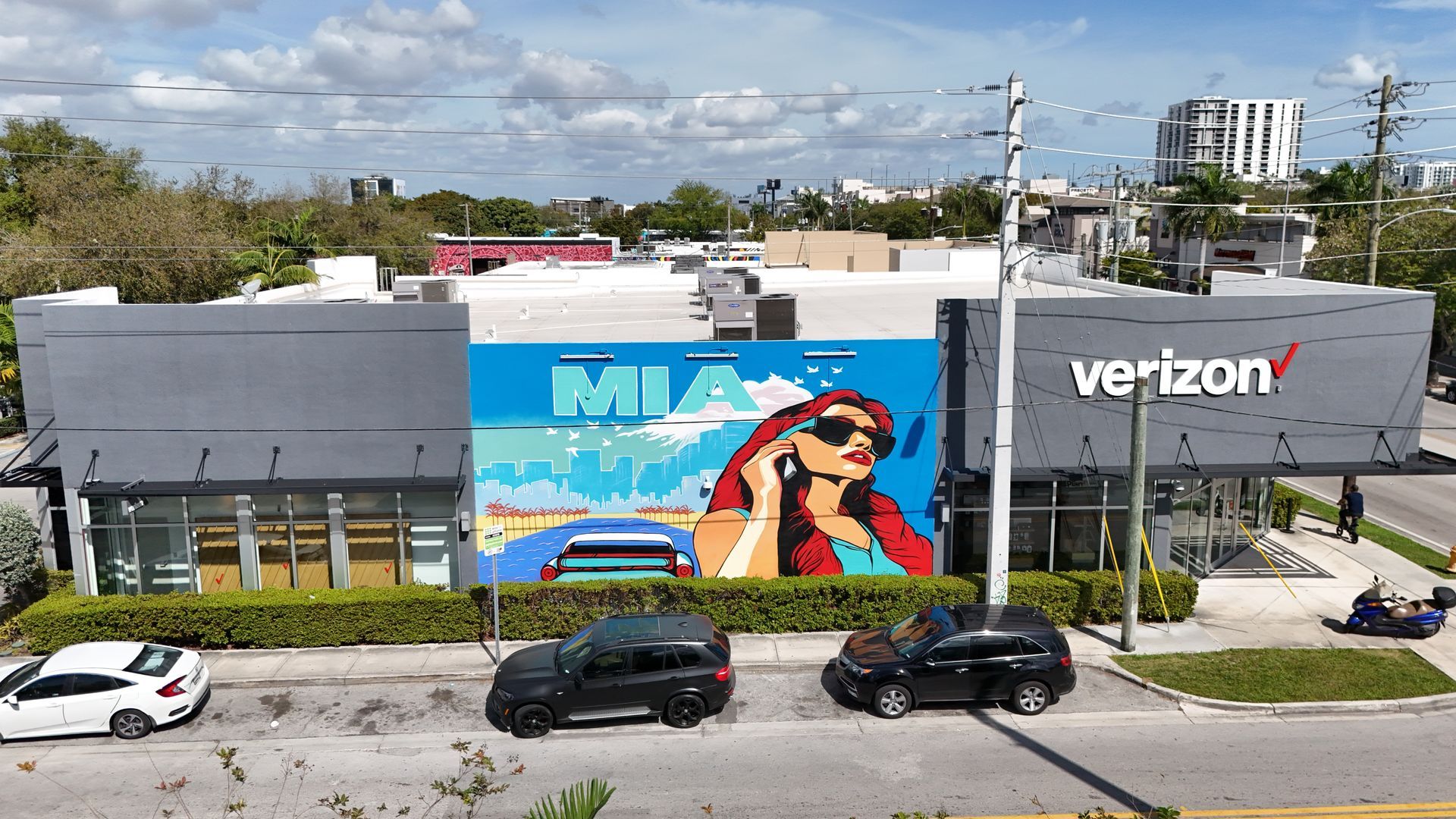Augmented Reality in the Pharmaceutical Industry: Revolutionizing Healthcare and Beyond
Lately, augmented reality (AR) has made quite the leap from being just a cool concept to an amazing technology that’s finding its way into many areas of our lives. One of the most exciting places this is happening is in the pharmaceutical industry, where AR is being used to improve research and development, make manufacturing more efficient, engage patients in new ways, and bring healthcare into the modern age. In this article, we’ll explore how AR is shaking things up in the pharmaceutical world, the great benefits it offers, and some of the challenges it still faces. By the end, you’ll gain a clear understanding of how AR technology is making waves today and what it could mean for the future of medicine!
1. Understanding Augmented Reality and Its Relevance to the Pharmaceutical Industry
Before exploring how augmented reality is influencing the pharmaceutical industry, it’s important to clarify what AR is and why it is especially relevant to healthcare and pharma. Augmented reality (AR) is a technology that overlays digital information—such as images, text, or 3D graphics—onto the real-world environment in real time. Unlike virtual reality (VR), which immerses the user in a completely simulated environment, AR enhances the physical world by adding digital elements that supplement our perception of reality.
In the pharmaceutical industry, processes often require high precision, accurate data interpretation, and complex visualization. AR’s ability to combine real-world objects with digital overlays is invaluable for training pharmaceutical staff, guiding healthcare professionals, assisting in surgical procedures, optimizing manufacturing and supply chain operations, and empowering patients to better understand and adhere to treatments.
2. AR in Pharmaceutical Research and Development
2.1 Accelerating Drug Discovery
Drug discovery is a complicated, lengthy, and costly process. Scientists spend countless hours analyzing protein interactions and disease pathways to develop new therapeutic compounds. AR can streamline drug discovery by enabling researchers to visualize complex molecular structures in 3D. With digital overlays, scientists can manipulate molecules in real-time and predict how they might interact with specific biological targets. This enhanced visualization:
- Improves Molecular Modeling: AR-based simulations allow scientists to better understand molecular geometry, bond angles, and rotational freedom, expediting the design of potential drug candidates.
- Facilitates Collaboration: Teams can share real-time interactive 3D models, leading to faster decision-making and consensus-building during early research phases.
- Reduces Costs and Time: By identifying promising compounds earlier, R&D teams can minimize the number of failed experiments, reducing overall research costs and development timelines.
2.2 Optimizing Clinical Trials
Clinical trials are vital for new drugs, but they are often plagued by issues such as low patient recruitment, poor adherence, and complex documentation requirements. Augmented reality can address these challenges by offering:
- Enhanced Patient Engagement: AR-powered applications can educate trial participants about the study, drug mechanism, and possible side effects in an immersive way, improving their understanding and trust.
- Remote Monitoring and Support: AR devices equipped with sensors can track patient vitals and treatment adherence in real-time, reducing the need for frequent hospital visits.
- Streamlined Data Collection: AR-enabled documentation tools help researchers record trial data more accurately, thus minimizing human errors and accelerating regulatory submissions.
2.3 Training and Skill Development
For pharmaceutical scientists, ongoing training is crucial given the rapid pace of scientific advancements. AR offers immersive training modules that simulate laboratory environments and complex experimental protocols, enabling trainees to practice and make decisions in real-world scenarios without risking lab resources or compromising patient safety. This hands-on, visual approach allows learners to grasp theoretical concepts quickly, bridging the gap between textbook knowledge and lab expertise.
3. Revolutionizing Manufacturing and Supply Chain Management
3.1 Enhancing Production Processes
Pharmaceutical manufacturing is a highly regulated and precision-driven environment that demands strict adherence to protocols and quality standards. Augmented reality can significantly enhance these processes by providing digital instructions or checklists superimposed over real-world equipment. This ensures that operators carry out each step correctly, thereby:
- Reducing Human Error: AR-guided workflows minimize mistakes by confirming the correct sequence of steps, accurate measurement of ingredients, and adherence to safety protocols.
- Improving Efficiency: Real-time digital feedback helps workers troubleshoot issues quickly, reducing downtime and improving overall productivity.
- Ensuring Quality Control: AR devices can visually inspect and compare pharmaceutical products against a standard, detecting any deviations in shape, color, or packaging.
3.2 Streamlining Maintenance and Repairs
Pharmaceutical facilities house complex machinery that requires regular maintenance for optimal performance. AR-driven maintenance tools can overlay diagnostic data on specific machine parts, guiding technicians through repair processes step by step. This approach ensures that technicians have immediate access to the right information and reduces the likelihood of errors or overlooked maintenance tasks. Furthermore, remote experts can join maintenance sessions virtually, offering real-time assistance to on-site personnel through collaborative AR platforms.
3.3 Optimizing Supply Chain Visibility
Supply chain management can benefit immensely from AR-enabled tracking and monitoring in an industry where product integrity and timeliness are critical. By integrating AR applications with advanced sensors, RFID tags, and IoT devices, pharmaceutical companies can gain real-time visibility into the location and condition of shipments. AR dashboards allow supply chain managers to see a digital representation of the logistics process:
- Quality Assurance: Track temperature, humidity, and other critical parameters in real-time to maintain product stability, especially for vaccines and biologics.
- Regulatory Compliance: Generate detailed reports on product handling to demonstrate compliance with Good Manufacturing Practices (GMP) and other regulatory standards.
- Efficient Route Planning: Leverage real-time data on shipment locations and traffic conditions to ensure timely deliveries while minimizing costs.
4. Transforming Patient Engagement and Healthcare Outcomes
4.1 Personalized Patient Education
Proper patient education is essential for ensuring medication compliance and successful treatment outcomes. Unfortunately, traditional educational materials like brochures and lengthy instructions often fail to capture patient attention. By integrating AR applications, pharmaceutical companies and healthcare providers can create interactive educational tools that demonstrate:
- Drug Mechanisms: Visually depict how a medication interacts with the body, showing the pathways it takes and how it combats disease.
- Proper Administration: Provide detailed instructions—such as injection techniques, timing, and dosage—in an interactive, step-by-step format.
- Anticipated Results and Potential Side Effects: Offer realistic simulations of possible side effects, preparing patients for what they might experience during therapy.
These immersive educational modules engage patients more effectively and bolster adherence and reduce anxiety by setting realistic expectations.
4.2 AR-Assisted Medical Procedures
Beyond patient education, healthcare professionals increasingly use augmented reality during complex procedures. While not exclusive to the pharmaceutical industry, this application of AR has ramifications for drug delivery systems and medical devices. Wearable AR devices can provide healthcare workers with real-time patient data, such as imaging scans or vitals, overlaid onto a patient’s body. This precise visualization helps:
- Increase Accuracy: Display organ structures and potential risk areas, more accurately guiding drug injections or interventions.
- Minimize Invasive Techniques: AR can reduce the need for additional exploratory procedures by providing real-time visual cues.
- Save Time: Direct visualization of blood vessels, nerves, or surgical pathways can streamline procedures, leading to faster patient recovery times.
4.3 Remote Consultations and Telemedicine
Telemedicine has been on the rise, and the COVID-19 pandemic further validated the need for robust remote care solutions. Healthcare providers and pharmaceutical companies can bridge geographical barriers by combining AR with telemedicine platforms. For instance, doctors can guide patients through self-administration of medication in real-time using AR overlays, or nurses can carry out home visits equipped with AR glasses that connect them to remote specialists. As such, patients in rural or underserved areas gain access to the same level of care and support as those in urban centers.
5. Regulatory Considerations and Compliance
Despite AR’s vast potential, regulatory hurdles remain significant in the pharmaceutical industry. Organizations must ensure that any AR-based solution meets strict guidelines laid out by authorities like the U.S. Food and Drug Administration (FDA), the European Medicines Agency (EMA), and other global regulatory bodies. Some considerations include:
- Data Security and Privacy: AR devices and applications often collect and store patient data, which must comply with regulations such as HIPAA (in the U.S.) and GDPR (in the EU).
- Validation and Testing: Given the high stakes of drug development and patient safety, AR tools and software must undergo rigorous testing, validation, and quality assurance.
- User Training: Regulatory bodies may require organizations to provide evidence that staff members are adequately trained to use AR devices and software.
While these considerations can slow adoption, they also ensure that the technology is safe and effective. As AR becomes more widespread, regulatory frameworks will likely evolve to accommodate the complexities of next-generation health technologies.
6. Challenges and Barriers to Adoption
6.1 Cost of Implementation
Although AR’s return on investment can be significant, the initial costs for hardware, software development, and staff training can be prohibitive. The steep cost curve can delay or limit adoption for smaller or mid-sized pharmaceutical companies. Yet, as AR technologies become more common and mass-produced, the hardware and development costs are expected to decrease.
6.2 Technological Limitations
While AR has advanced substantially, some limitations still exist. Battery life on wearable devices, processing power, and user comfort are recurring challenges. Additionally, integrating AR platforms with legacy systems in pharmaceutical production and supply chain management can be complex. Overcoming these technical obstacles requires cross-industry collaboration and continuous research and development.
6.3 Cultural Resistance
Implementing cutting-edge technology often sparks resistance within traditionally conservative sectors like pharmaceuticals. Decision-makers may hesitate to invest in AR if they are unsure about tangible benefits or fear disruption to existing workflows. Moreover, training employees to use AR devices effectively can be challenging if digital literacy is lacking or reluctance to adapt to new processes.
7. Looking to the Future: AR’s Long-Term Impact on the Pharmaceutical Landscape
As AR matures, its role in the pharmaceutical industry is poised to expand dramatically. Below are potential areas where AR could make significant long-term contributions:
- Precision Medicine: AR combined with genetic data could guide highly personalized treatments, enabling real-time visualization of patient-specific risk factors or therapeutic targets.
- Pharmacovigilance: AR applications can enhance post-marketing surveillance that helps healthcare professionals and patients identify, record, and report adverse drug reactions more accurately.
- Advanced Surgical Tools: Combining AR with robotic surgical systems could enable unprecedented levels of control and visualization, minimizing invasiveness and improving patient outcomes.
- Global Collaboration: Real-time collaborative AR platforms could bring together researchers, clinicians, and regulators worldwide, accelerating innovation and improving the accessibility of medical breakthroughs.
- Improved Wearable Devices: Future AR glasses and headsets, with better processing power and battery life, may become standard tools in pharmaceutical labs, manufacturing facilities, and clinics.
8. Strategies for Successful AR Integration in Pharma
To ensure a smooth transition and maximize the benefits of AR, pharmaceutical companies should adopt a strategic approach:
- Identify High-Value Use Cases: Focus on specific areas—like manufacturing compliance, clinical trial recruitment, or patient education—where AR can generate measurable outcomes quickly.
- Pilot Programs: Implement small-scale pilot programs to evaluate technology viability and gather feedback. Use these insights to refine systems before scaling up.
- Cross-Functional Collaboration: Bring together IT professionals, researchers, clinicians, and regulatory experts early in the planning process to address potential hurdles and optimize solutions.
- Invest in Training: Provide comprehensive training and resources so employees can effectively use AR tools, reducing the likelihood of human error or suboptimal usage.
- Develop Clear ROI Metrics: Quantify the impact of AR initiatives in terms of cost savings, reduced error rates, improved patient outcomes, or faster R&D cycles. These metrics help justify further investments and demonstrate the technology’s value.
9. Case Studies: Real-World Applications of AR in Pharma
Although some implementations are still in the experimental phase, several pharmaceutical and healthcare organizations have successfully adopted AR:
- Pfizer’s AR Integration in Manufacturing: Pfizer has piloted AR headsets for guiding technicians through machinery setups and changeovers. By overlaying step-by-step instructions, they significantly reduced downtime and minimized errors during production.
- Clinical Trial Education at Novartis: Novartis has explored AR-based applications to enhance patient understanding of complex therapies. Patient enrollment and retention rates in certain trials improved by showing real-time visualizations of how a drug works in the body.
- AR-Enhanced Employee Training at Merck: Merck employed AR simulations that replicate lab environments, allowing trainees to practice tasks repeatedly without using expensive materials. This reduced training time and improved workforce readiness for actual lab procedures.
These examples underscore AR’s transformative power and hint at the broad spectrum of applications that can bolster efficiency, reduce costs, and improve patient care.
10. Conclusion
Augmented reality has rapidly evolved from an emerging technology into a critical tool capable of reshaping the pharmaceutical industry. Its ability to enhance visualization, streamline processes, and foster collaboration holds tremendous promise for drug discovery, clinical trials, manufacturing, supply chain management, and patient engagement. By offering interactive, real-time data overlays in diverse pharma settings—from the lab to the production floor and the patient’s home—AR is poised to redefine the boundaries of modern medicine.
Despite inevitable challenges, such as high implementation costs, technological limitations, and regulatory complexities, the current trajectory suggests that AR will become a standard feature in pharmaceutical operations. Pharmaceutical companies that embrace AR technologies early can gain a competitive edge by accelerating product development, improving operational efficiencies, and delivering superior patient experiences. Conversely, those that lag behind risk missing out on the immense advantages and could face difficulties remaining relevant in an increasingly high-tech healthcare landscape.
In a world driven by digital transformation, augmented reality is a key catalyst for innovation in the pharmaceutical industry. By empowering researchers, manufacturers, healthcare professionals, and patients alike, AR is an instrument of progress, bridging the gap between complex scientific processes and accessible, effective healthcare solutions. As AR hardware and software evolve, the possibilities will only grow, underscoring the importance of strategic investment and collaboration in shaping the future of pharma and healthcare globally.
TALK TO A PRO
We're here to bring your brand to life!
Stay Connected with BrandXR
Create Augmented Reality for Free!
Create, Publish, and Measure 3D Augmented Reality Experiences Without Having to Code.














